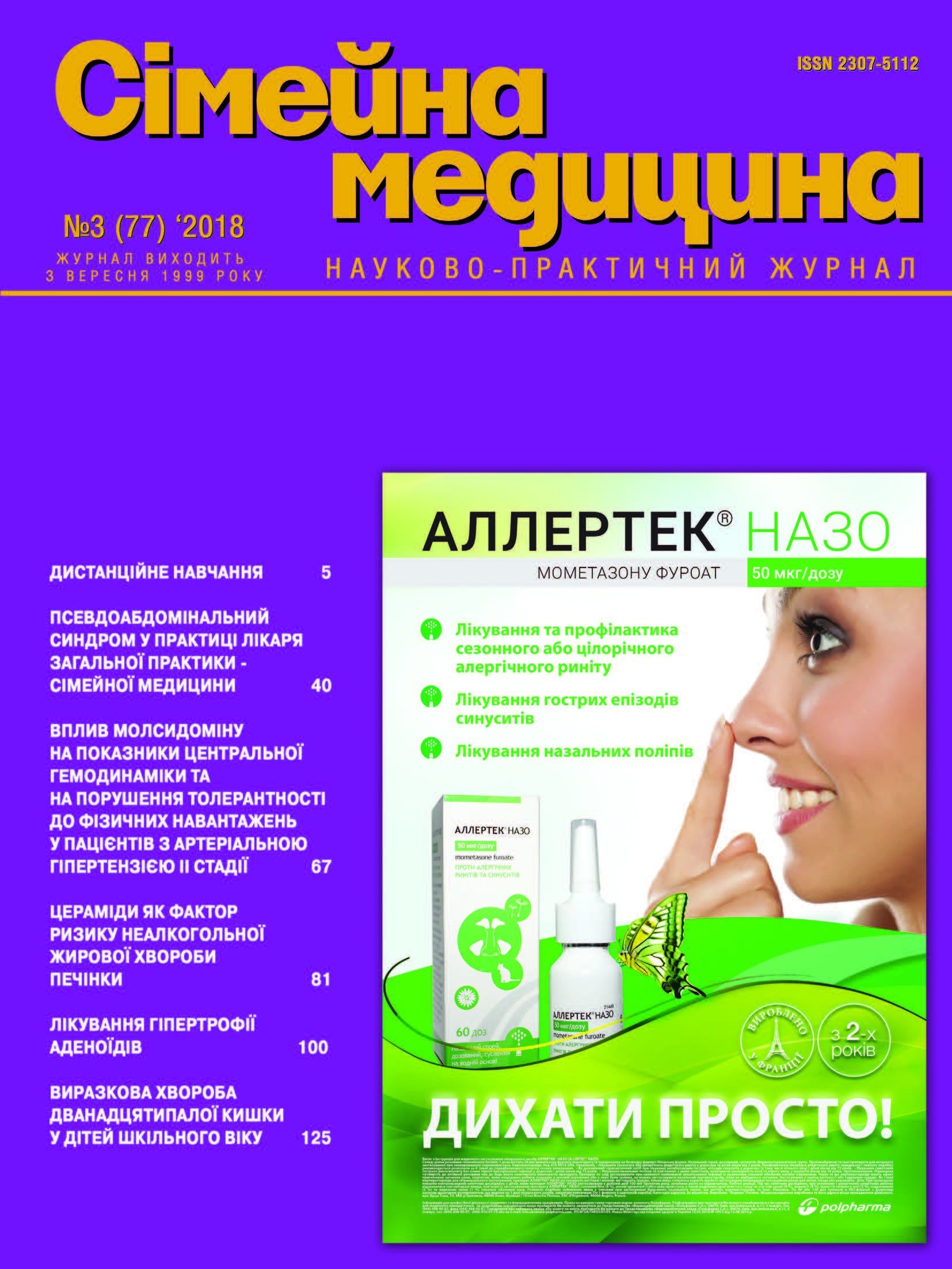Basic approaches to treatment of urinary tract infection in the practice of a family doctor
##plugins.themes.bootstrap3.article.main##
Abstract
The objective: a comparative study was aimed at the study of the effectiveness and evaluation of the dynamics of clinical and laboratory parameters of therapy with oral antimicrobial Flaprox versus nitrofuran therapy in patients with exacerbation of chronic urinary tract infection in outpatient settings.
Materials and methods. Тhe study included 40 patients (16 men, 24 women) with exacerbation of chronic pyelonephritis. Participants in the study were divided into 2 groups: 26 patients who received Flaprox 500 mg twice a day for 10 days in the main group (A), 14 patients in the control group (B) received nitrofuran 100 mg 4 once a day for 10 days. The mean age of the patients was 39,8±8,9 years.
Results. The regression of clinical manifestations of urinary tract infection in the study process was noted in both groups. In the main group, the dynamics of reduction of symptoms of general intoxication and normalization of local symptoms and inflammatory changes in blood and urine has a more pronounced tendency from 5 days of treatment and persisted throughout the course of therapy.
Conclusions. Flaprox useing for 10 days allowed to reliably reduce or eliminate dysuria, infection of the urinary tract (bacteriuria), and inflammatory process (leukocythria) without negative changes in the blood biochemistry analysis. Therapy of UTI with Flaprox demonstrates efficacy in comparison with the use of nitrofurans and the achievement of positive dynamics of clinical and laboratory parameters in a shorter time.##plugins.themes.bootstrap3.article.details##

This work is licensed under a Creative Commons Attribution 4.0 International License.
Authors retain the copyright and grant the journal the first publication of original scientific articles under the Creative Commons Attribution 4.0 International License, which allows others to distribute work with acknowledgment of authorship and first publication in this journal.
References
Ермоленко В.М., Филатова Н.Н., Малкоч А.В. Инфекция мочевых путей и ее лечение в возрастном аспекте / Лечащий врач. – 2012. – № 8. Full text
Палагин И.С. и соавт. Современное состояние антибиотикорезистентности возбудителей внебольничных инфекций мочевых путей в России: результаты исследования «ДАРМИС» (2010–2011). / Клин. микробиол. антимикроб. химиотер. – 2012, – Т. 14, № 4. – C. 280–302 PDF
Синякова Л.А., Косова И.В. Антимикробная терапия неосложненных инфекций мочевых путей / Consilium Medicum. – 2014. – № 07. Full text
Перепанова Т.С., Козлов Р.С. и др. Эмпирический выбор антимикробных препаратов при неосложненной инфекции нижних мочевых путей: исследование резистентности возбудителей «ДАРМИС» / Экспериментальная и клиническая урология. – 2012. – № 2. – C. 78–83 PDF
Ana L. Flores-Mireles, Jennifer N. Walker, Michael Caparon & Scott J. Hultgren. Urinary tract infections: epidemiology, mechanisms of infection and treatment options. Nature Reviews Microbiology 13, 269–284 (2015). https://doi.org/10.1038/nrmicro3432
Guidelines on urological infections / European Association of Urology, 2015. PDF
Іванов Д.Д., Кушніренко С.В. Інфекції сечових шляхів у практиці сімейного лікаря / Семейная медицина. – 2015. – № 2 (58).
Іванов Д.Д. Інфекції сечових шляхів: лікування пієлонефриту / Журнал «Почки». – 2013. – № 3. Full text
Guidelines on urological infections / European Association of Urology, 2017. PDF





